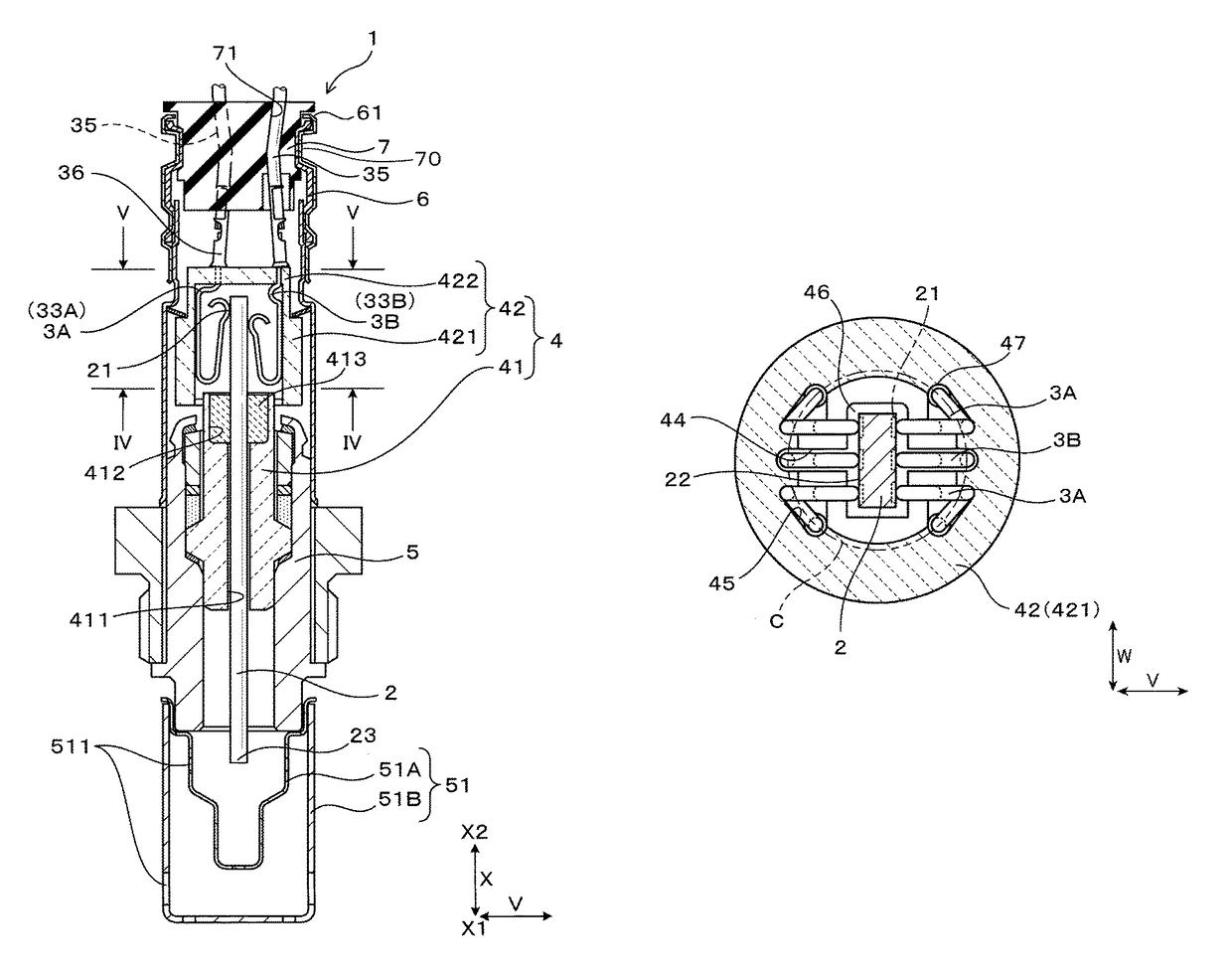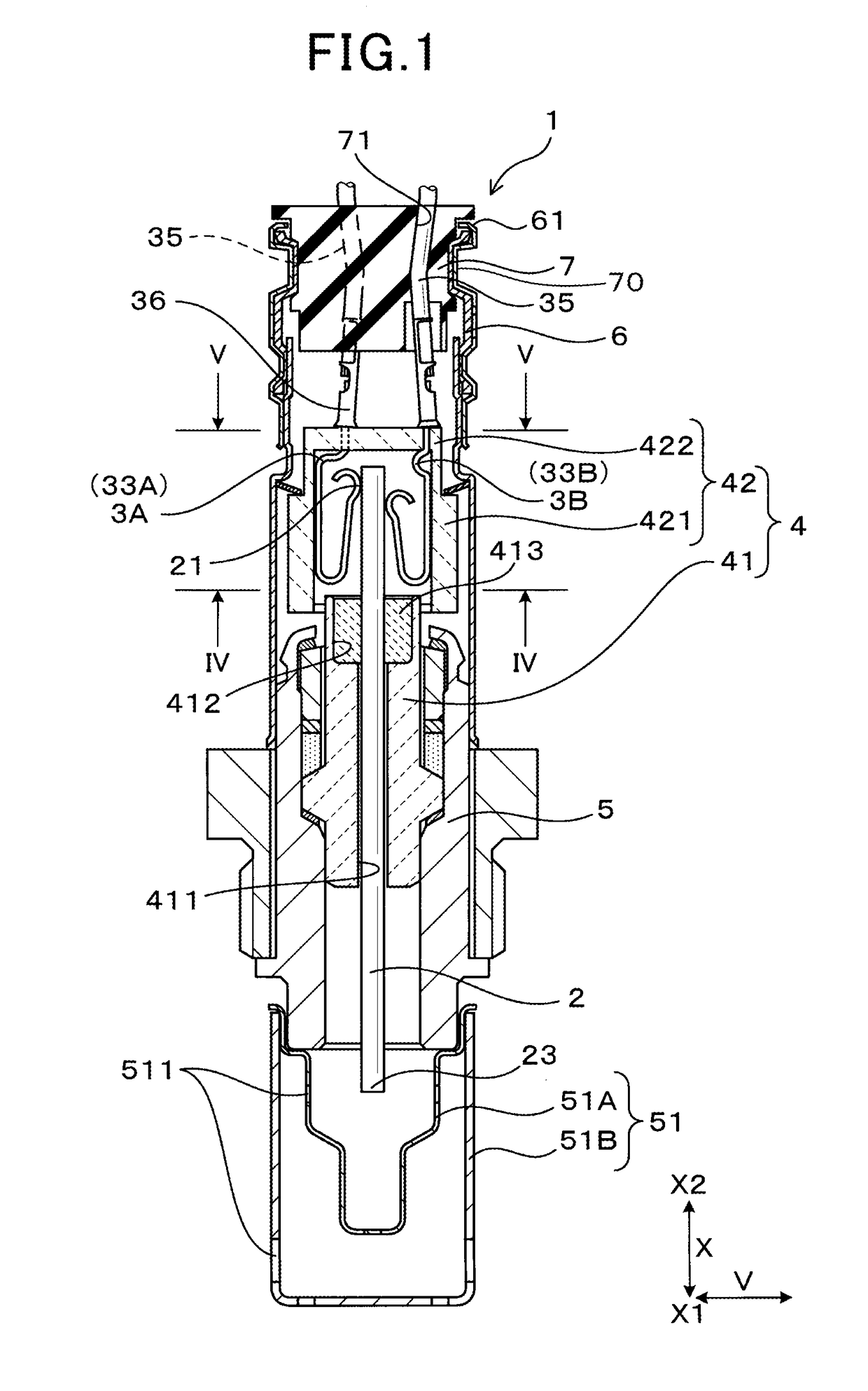Sensor
a technology of sensors and electrodes, applied in the field of sensors, can solve the problems of lead wire deformation, difficulty in reducing the size or thickness of electrical terminals, lead wire deformation, etc., and achieve the effect of reducing the size or thickness
- Summary
- Abstract
- Description
- Claims
- Application Information
AI Technical Summary
Benefits of technology
Problems solved by technology
Method used
Image
Examples
Embodiment Construction
[0024]Referring now to the drawings, particularly to FIG. 1, there is shown the sensor 1 according to an embodiment.
[0025]The sensor 1, as illustrated in FIG. 1, includes the sensor device 2, a plurality of contact springs 3A and 3B, a plurality of lead wires 35, the porcelain insulator (also called a ceramic insulator) 4, the housing 5, the cylindrical cover 6, and the bush 7.
[0026]The sensor device 2 has major surfaces (which will also be referred to below as device surfaces) 22 which extend parallel to each other and are opposed through a thickness of the sensor device 2. The sensor device 22 also has a plurality of electrode terminals 21 disposed on the device surfaces 22, respectively. The contact springs 3A and 3B are placed in contact with the electrode terminals 21, respectively. The lead wires 35 are joined to the contact springs 3A and 3B, respectively. The porcelain insulator 4 has the sensor device 2 and the contact springs 3A and 3B retained therein. The housing 5 has t...
PUM
 Login to View More
Login to View More Abstract
Description
Claims
Application Information
 Login to View More
Login to View More - R&D
- Intellectual Property
- Life Sciences
- Materials
- Tech Scout
- Unparalleled Data Quality
- Higher Quality Content
- 60% Fewer Hallucinations
Browse by: Latest US Patents, China's latest patents, Technical Efficacy Thesaurus, Application Domain, Technology Topic, Popular Technical Reports.
© 2025 PatSnap. All rights reserved.Legal|Privacy policy|Modern Slavery Act Transparency Statement|Sitemap|About US| Contact US: help@patsnap.com



